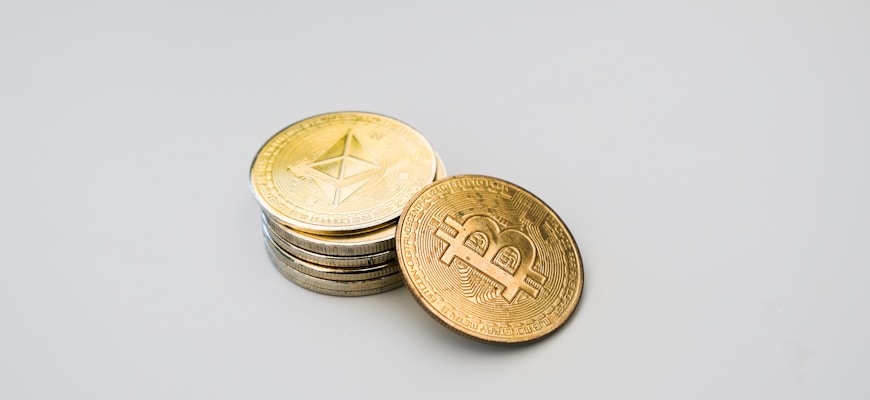The Risks of Investing in New and Unproven Altcoins

- The Dangers of Speculative Investments in Unknown Altcoins
- Understanding the Volatility of New Cryptocurrencies
- Potential Scams and Frauds in the Altcoin Market
- The Importance of Research Before Investing in Unproven Coins
- Regulatory Risks Associated with Emerging Altcoins
- How to Identify Red Flags When Considering New Cryptocurrency Investments
The Dangers of Speculative Investments in Unknown Altcoins
Investing in new and unproven altcoins can be enticing due to the potential for high returns in a short amount of time. However, it also comes with significant risks that investors should be aware of. One of the main dangers of speculative investments in unknown altcoins is the lack of regulation and oversight. This means that these cryptocurrencies are more susceptible to fraud and manipulation by unscrupulous individuals. Additionally, the lack of a proven track record for these altcoins makes it difficult to assess their long-term viability and potential for growth.
Another risk of investing in unknown altcoins is the volatility of the market. These cryptocurrencies can experience extreme price fluctuations, leading to significant losses for investors. Without a solid foundation or established market presence, new altcoins are especially vulnerable to market sentiment and external factors that can impact their value. This unpredictability can make it challenging to make informed investment decisions and protect your capital.
Furthermore, the lack of liquidity in unknown altcoins can make it difficult to buy or sell your holdings quickly. This illiquidity can result in delays or difficulties in executing trades, especially during times of market stress or high volatility. As a result, investors may find themselves unable to exit their positions at a desired price, leading to potential losses or missed opportunities.
In conclusion, while the allure of investing in new and unproven altcoins may be strong, it is essential to carefully consider the risks involved. Speculative investments in unknown cryptocurrencies can expose investors to fraud, market volatility, and liquidity issues. Before diving into this risky market, it is crucial to conduct thorough research, seek professional advice, and only invest what you can afford to lose. By understanding the dangers of speculative investments in unknown altcoins, investors can make more informed decisions and protect their financial well-being.
Understanding the Volatility of New Cryptocurrencies
Investing in new altcoins can be risky due to their high volatility. The prices of these cryptocurrencies can fluctuate wildly in a short period of time, leading to potential gains or losses for investors. It is important to understand the factors that contribute to this volatility in order to make informed investment decisions.
One of the main reasons for the volatility of new altcoins is their lack of liquidity. These cryptocurrencies are often traded on smaller exchanges with lower trading volumes, making it easier for large buy or sell orders to have a significant impact on their prices. This can lead to sharp price movements that may not be reflective of the true value of the coin.
Additionally, new altcoins are often more susceptible to market manipulation. Pump and dump schemes, where the price of a cryptocurrency is artificially inflated by a group of investors before being sold off at a profit, are common in the world of altcoin trading. This can further contribute to the volatility of these coins and make it difficult for investors to predict their price movements.
In conclusion, while investing in new altcoins can be exciting and potentially profitable, it is important to be aware of the risks involved. Understanding the volatility of these cryptocurrencies and the factors that contribute to it can help investors make more informed decisions and mitigate their exposure to potential losses.
Potential Scams and Frauds in the Altcoin Market
Investing in new and unproven altcoins can be risky due to potential scams and frauds prevalent in the market. It is essential to be cautious and vigilant when considering investing in these digital assets. Some common scams and frauds to watch out for include:
- Pump and dump schemes: This is when the price of an altcoin is artificially inflated through misleading or false information, only for the scammers to sell off their holdings at a profit, causing the price to crash.
- Fake ICOs: Initial Coin Offerings (ICOs) are a popular way for new altcoins to raise funds, but some projects turn out to be scams where the founders disappear with investors’ money.
- Phishing attacks: Scammers may create fake websites or emails that look like legitimate cryptocurrency exchanges or wallets to steal users’ personal information or funds.
- Ponzi schemes: Some altcoins promise high returns to early investors by using the capital of new investors, rather than generating profits from legitimate sources.
It is crucial to thoroughly research any altcoin before investing and to only use reputable exchanges and wallets. Additionally, be wary of any investment opportunities that sound too good to be true, as they likely are. By staying informed and cautious, investors can protect themselves from falling victim to scams and frauds in the altcoin market.
The Importance of Research Before Investing in Unproven Coins
Before investing in new and unproven altcoins, it is crucial to conduct thorough research to assess the potential risks and rewards associated with these investments. Due to the volatile nature of the cryptocurrency market, it is essential to gather as much information as possible about the coin, the team behind it, its technology, and its use case. Without proper research, investors may fall victim to scams or projects with no real value.
Researching unproven coins can help investors make informed decisions and avoid falling prey to fraudulent schemes. By analyzing the whitepaper, checking the team’s credentials, and assessing the community’s sentiment, investors can gain a better understanding of the coin’s potential for success. Additionally, researching the market trends and competitors can provide valuable insights into the coin’s position in the market.
Investing in unproven coins without conducting research is akin to gambling with your money. It is essential to be cautious and skeptical when considering new altcoin investments. By taking the time to research and analyze the coin thoroughly, investors can mitigate risks and increase their chances of making profitable investments in the long run.
Regulatory Risks Associated with Emerging Altcoins
Investing in emerging altcoins carries regulatory risks that investors should be aware of. These new cryptocurrencies are often not as established as well-known ones like Bitcoin or Ethereum, making them more susceptible to regulatory scrutiny. Regulators around the world are paying closer attention to the cryptocurrency market, and new altcoins may face challenges in complying with evolving regulations.
One of the main regulatory risks associated with emerging altcoins is the potential for them to be classified as securities. If a cryptocurrency is deemed to be a security by regulators, it may be subject to strict regulations that could impact its value and trading ability. This classification can also lead to legal consequences for the creators and investors of the altcoin.
Another regulatory risk is the possibility of government intervention in the cryptocurrency market. Some countries have banned or restricted the use of cryptocurrencies, which can have a significant impact on the value and viability of emerging altcoins. Government actions such as these can create uncertainty and volatility in the market, making investing in new altcoins a risky proposition.
Investors should also be aware of the risk of fraudulent activity associated with emerging altcoins. Because these cryptocurrencies are new and unproven, they may be more vulnerable to scams and fraudulent schemes. Investors should conduct thorough research and due diligence before investing in any altcoin to avoid falling victim to fraudulent activities.
In conclusion, while investing in emerging altcoins can be potentially profitable, it is important for investors to consider the regulatory risks associated with these new cryptocurrencies. By staying informed and cautious, investors can mitigate some of the risks and make more informed decisions when investing in new and unproven altcoins.
How to Identify Red Flags When Considering New Cryptocurrency Investments
When considering investing in new cryptocurrencies, it is crucial to be able to identify red flags that could indicate potential risks. Here are some key factors to watch out for:
- Anonymous Team: One of the biggest red flags is when the team behind the cryptocurrency is anonymous. Transparency is essential in the world of cryptocurrency, and not knowing who is behind the project can be a cause for concern.
- Lack of Whitepaper: A whitepaper is a document that outlines the technical details, goals, and vision of a cryptocurrency project. If a new altcoin does not have a whitepaper or the whitepaper lacks substance, it may not be a legitimate investment.
- Unrealistic Promises: Be wary of projects that make grandiose promises of guaranteed returns or claims of being the next big thing in the crypto world. If something sounds too good to be true, it probably is.
- Low Liquidity: Liquidity refers to how easily a cryptocurrency can be bought or sold without causing significant price changes. Investing in a coin with low liquidity can make it difficult to exit your position if needed.
- Security Concerns: Security is paramount in the world of cryptocurrency. If a new altcoin has a history of security breaches or vulnerabilities, it may not be a safe investment.
By being vigilant and doing thorough research, you can avoid falling victim to scams or investing in projects with little to no potential. Remember, it is always better to err on the side of caution when it comes to new and unproven altcoins.



